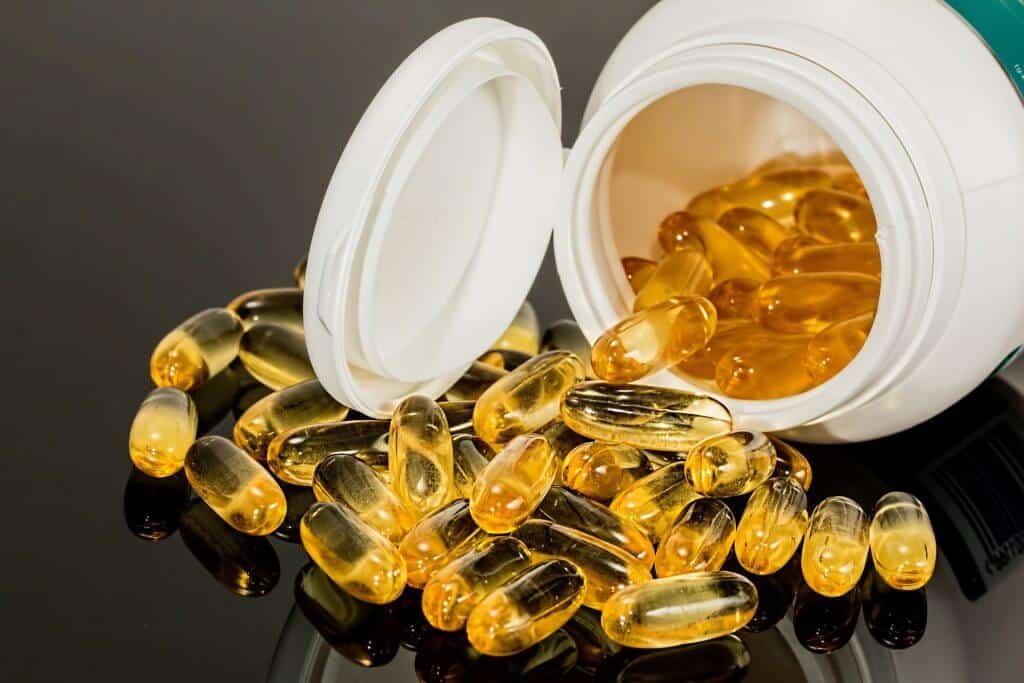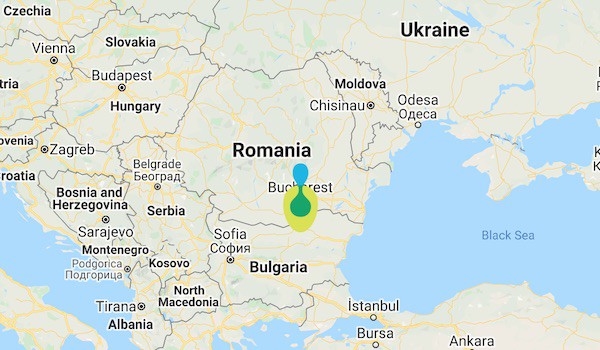Statistically speaking, patients who maintain their weight during breast cancer treatment have the best prognostic. Most of the weight gain happens during chemotherapy when many breast cancer patients either eat too little because of the decreased appetite or too much in an attempt to cope with the treatment. There are 2 main mechanisms behind this weight: decreased metabolism and decreased ability to perceive satiety.
- Decreased basal metabolic rate
The only part of the metabolic rate that we can influence without making ourselves ill is the energy used by our skeletal muscles that contracts 24h in a row to maintain body tonus. The higher the active muscle mass percentage, the higher the metabolic rate; and vice versa – the metabolic rate decreases through muscle mass loss (sarcopenia).1
Sarcopenia is mainly associated with aging, but it also develops in about 25% of breast cancer patients, both in those who lose weight and in those who gain weight during chemotherapy, being conclusive for chemotherapy toxicity.2, 3
During breast cancer chemotherapy, besides the increased muscular catabolism generated by the decreased estrogen,4 the muscle mass is gradually lost through the sedentariness and inadequate intake of protein to sustain muscle mass.5
Many breast cancer patients have an inadequate protein intake either due to decreased appetite,6 either to the fact that they completely exclude meat and/ or dairy products from their diet based on common beliefs associated with cancer.7
Yet plant foods completely lack B12 vitamin, and have either an imbalanced, insufficient or unusable content essential nutrients and micronutrients.8, 9 And besides dysphagia, balance disorders, and osteoporosis, the decreased basal metabolic rate is causing:
- An increase in the body fat percentage – in patients who don’t overeat;10
- An increase in the body fat percentage, aggravated sarcopenia, and further decreased basal metabolic rate – in patients who overeat.11, 12
Also, studies prove that being sedentary decreases the basal metabolic rate of the breast cancer patients because it deregulates the balance between muscle protein degradation and synthesis. Thus, breast cancer patients can actively fight the metabolic decrease caused by sarcopenia through proper protein intake and through resistance training.
Anaerobic exercise (either isometric or isokinetic using only the body weight as a resistance) can improve muscle protein turn-over in favor of synthesis.13 The result is a maintained muscle mass and basal metabolic rate if the patient has not developed sarcopenia yet, or a gradual increase in the active muscle mass if the patients already has some degree of sarcopenia (which can happen in old patients who developed sarcopenia due to aging ± due to chemotherapy).14
So, practicing minimal daily resistance training exercises – even in hospital settings – can maintain or improve metabolism.
- Decreased ability to perceive satiety
Many breast cancer patients develop dyslipidemia during chemotherapy, or are already dyslipidemic at the start of the treatment. During the treatment, dyslipidemia is caused:
- Either by the decreased intestinal absorbability of disaccharides paralleled by an intestinal hyperpermeability for undigested proteins generating dysbiosis which leads to an increased lipolysis;15, 16
- Either by too low appetite (unintentional starvation);17
- Either by the overeating foods high in carbohydrates.18
But, no matter the mechanism, dyslipidemia causes leptin resistance decreasing the patient ability to perceive satiety and generating hedonic hunger, sometimes even soon after eating a full meal.19, 20
Studies prove that many breast cancer patients without prior diabetes develop muscle insulin resistance during treatment.23 Insulin resistance is the survival mechanism used when the patient is either:
- limiting too much her food intake;21
- or when she is overeating foods too high in carbohydrates and too low in proteins.22
Insulin is stimulating the secretion of the satiety hormone leptin, and hyperinsulinemia is generating such an increase in leptin secretion that the hypothalamic neurons within the satiety nervous center become unresponsive to leptin. This practically creates the loss of control over the eaten amount of food and a paradoxical hunger state very soon after eating.
In consequence, breast cancer patients lose control over their eating behavior both when they eat too little and when they eat too much:
- When the patient overeats or when she eats regardless of physical hunger, glucose cannot pass through the sarcolemma because glucose is osmotic and GLUT4 shut off to protect the muscle cell damage done by a too high inner osmotic pressure. Insulin resistance happens after repeated excessive or unsolicited intake of any nutrient (directly when the patient overeats carbohydrates supplying foods, and indirectly when she overeats protein or fats supplying foods).24
- On the other hand, when the patient eats too little, the high level of blood circulating free fatty acids increases the fat delivery to the muscles which increases sarcolemma density and membrane expression of GLUT4, inhibiting the glucose uptake by skeletal muscle cells and increasing the amount of fat deposited inside the muscle cell even in healthy subjects.25 The result of an increased lipolysis does not equal fat loss. It equals an increase in circulating fatty acids, dyslipidemia and sometimes ectopic fat deposited inside the liver, the kidneys or the skeletal muscle.26
So, insulin resistance can shut down fat loss by inhibiting lipolysis and by increasing hunger paralleled with decreased ability to perceive satiety. That is why it is so important to prevent or solve insulin resistance. But once insulin resistance has been decreased, patients still need all the other mechanisms to lose fat, and they need them to take place within the skeletal muscle cells because besides the skeletal muscle cells there are no other cells that can be physiologically influenced to increase the energy they use.
A daily minimal physical activity and the proper eating behavior can maintain the earned results obtained through breast cancer treatment, and they can also improve the life quality of the breast cancer patient.
References
- Demark-Wahnefried, Wendy, et al. “Preventing sarcopenic obesity among breast cancer patients who receive adjuvant chemotherapy: results of a feasibility study.” Clinical Exercise Physiology 4.1 (2002): 44.
- Demark-Wahnefried, Wendy, et al. “Preventing sarcopenic obesity among breast cancer patients who receive adjuvant chemotherapy: results of a feasibility study.” Clinical Exercise Physiology 4.1 (2002): 44.
- Irwin, Melinda L., et al. “Changes in body fat and weight after a breast cancer diagnosis: influence of demographic, prognostic, and lifestyle factors.” Journal of Clinical Oncology 23.4 (2005): 774-782.
- Messier, Virginie, et al. “Menopause and sarcopenia: a potential role for sex hormones.” Maturitas 68.4 (2011): 331-336.
- Visovsky, Constance. “Muscle strength, body composition, and physical activity in women receiving chemotherapy for breast cancer.” Integrative cancer therapies 5.3 (2006): 183-191.
- Laviano, Alessandro, et al. “Therapy insight: cancer anorexia–cachexia syndrome—when all you can eat is yourself.” Nature clinical practice Oncology2.3 (2005): 158-165.
- Huebner, Jutta, et al. “Counseling Patients on Cancer Diets: A Review of the Literature and Recommendations for Clinical Practice.” Anticancer research 34.1 (2014): 39-48.
- McEvoy, Claire T., Norman Temple, and Jayne V. Woodside. “Vegetarian diets, low-meat diets and health: a review.” Public health nutrition 15.12 (2012): 2287-2294.
- Herbert, Victor. “The role of vitamin B12 and folate in carcinogenesis.” Essential Nutrients in Carcinogenesis. Springer US, 1986. 293-311.
- Zoico, Elena, et al. “Adipose tissue infiltration in skeletal muscle of healthy elderly men: relationships with body composition, insulin resistance, and inflammation at the systemic and tissue level.” The Journals of Gerontology Series A: Biological Sciences and Medical Sciences 65.3 (2010): 295-299.
- Fielding, Roger A., et al. “The paradox of overnutrition in aging and cognition.” Annals of the New York Academy of Sciences 1287.1 (2013): 31-43.
- Aapro, M., et al. “Early recognition of malnutrition and cachexia in the cancer patient: a position paper of a European School of Oncology Task Force.” Annals of Oncology (2014): mdu085.
- Schmitz, Kathryn H., et al. “Safety and efficacy of weight training in recent breast cancer survivors to alter body composition, insulin, and insulin-like growth factor axis proteins.” Cancer Epidemiology Biomarkers & Prevention 14.7 (2005): 1672-1680.
- Yarasheski KE. Managing sarcopenia with progressive resistance exercise training. The Journal of Nutrition, Health & Aging 2002; 6: 349-356
- Kung, Thomas, et al. “Novel treatment approaches to cachexia and sarcopenia: highlights from the 5th Cachexia Conference: Barcelona, Spain, 5-8 December 2009.” Expert opinion on investigational drugs 19.4 (2010): 579-585.
- Teixeira, Tatiana FS, et al. “Intestinal permeability parameters in obese patients are correlated with metabolic syndrome risk factors.” Clinical Nutrition 31.5 (2012): 735-740.
- Viscarra, Jose Abraham, and Rudy Martin Ortiz. “Cellular mechanisms regulating fuel metabolism in mammals: role of adipose tissue and lipids during prolonged food deprivation.” Metabolism 62.7 (2013): 889-897.
- Stenvinkel, Peter. “Obesity—a disease with many aetiologies disguised in the same oversized phenotype: has the overeating theory failed?.” Nephrology Dialysis Transplantation (2014): gfu338.
- Tessitore, L., et al. “Leptin expression in colorectal and breast cancer patients.” International journal of molecular medicine 5.4 (2000): 421-427.
- Yu, Y‐H., et al. “Metabolic vs. hedonic obesity: a conceptual distinction and its clinical implications.” Obesity Reviews (2015).
- Ensling, Myriam, William Steinmann, and Adam Whaley-Connell. “Hypoglycemia: A possible link between insulin resistance, metabolic dyslipidemia, and heart and kidney disease (the Cardiorenal Syndrome).” Cardiorenal medicine 1.1 (2011): 67.
- Borugian, Marilyn J., et al. “Insulin, macronutrient intake, and physical activity: are potential indicators of insulin resistance associated with mortality from breast cancer?.” Cancer Epidemiology Biomarkers & Prevention 13.7 (2004): 1163-1172.
- Lu, Lin-jie, et al. “On the status of β-cell dysfunction and insulin resistance of breast cancer patient without history of diabetes after systemic treatment.” Medical Oncology 31.5 (2014): 1-5.
- Rose, D. P., D. Komninou, and G. D. Stephenson. “Obesity, adipocytokines, and insulin resistance in breast cancer.” Obesity reviews 5.3 (2004): 153-165.
- Boden, Guenther, et al. “Effects of acute changes of plasma free fatty acids on intramyocellular fat content and insulin resistance in healthy subjects.” Diabetes 50.7 (2001): 1612-1617.
- Schaffer, Jean E. “Lipotoxicity: when tissues overeat.” Current opinion in lipidology 14.3 (2003): 281-287.
- Yu, Yi-Hao, and Henry N. Ginsberg. “Adipocyte signaling and lipid homeostasis sequelae of insulin-resistant adipose tissue.” Circulation research 96.10 (2005): 1042-1052.





